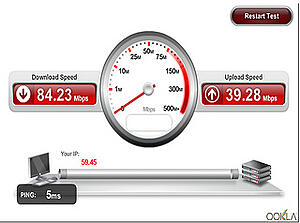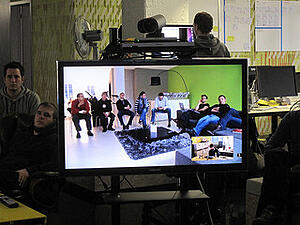
So in our last blog, we discussed Multi-Mode fiber-optic cabling and its most typical deployment uses. To summarize, Multi-Mode is best deployed on a local basis, as either the network backbone or in providing extremely high-speed connections directly to workers. Its high-speed data transmission properties limit its ability to transmit across long distances.
Single-Mode has the opposite issue. It's perfect for long-distance transmission, but will generally struggle in local deployments. Further, it's also significantly more expensive than Multi-Mode, especially if you want to see the same speeds as you would from Multi-Mode.
So, let's see what makes Single-Mode different from Multi-Mode.
 The Makeup Of A Single Mode Fiber Optic Cable
The Makeup Of A Single Mode Fiber Optic Cable
The key distinguishing characteristic of Single-Mode optical cable is that the central glass core of the cable is extremely thin. It's around 9 microns, which is only slightly wider than the photons it's transmitting. By comparison, a human hair is 75-100 microns.
So, a Single-Mode optical cable is effectively a one-way street. There's very little internal reflection/refraction, and it basically sends a laser beam straight through the core to the other end with as little power loss as physically possible.
Then, at the receiving end, it goes through an optical switch (and attached transceiver) which decodes the laser light into a format that the local network can use.
As we noted in the last blog, it's not recommended to interchange Single-Mode and Multi-Mode fiber. Neither the cables or the hardware are directly compatible, and require an additional piece of hardware to do any sort of translation. So, it's important to lay the fiber you need, the first time.
Speed Is Money
There's another issue affecting Single-Mode, which we'll just touch on briefly here: The hardware is more expensive than Multi-Mode to start with, and it can become extremely expensive if you're looking to transmit at 10Gb/s or higher. In optimal conditions, researchers have managed to transmit signals hundreds of miles at 40Gb/s, but the hardware needed for that has huge power requirements as well as needing very precise tooling.
So, if you're thinking about Single-Mode, be sure to ask plenty of questions about transmission distances, speed, and cost. There's a complex equation to be worked out there, if you're going to maximize your benefits without excess expenditure.
On the other hand, the actual cabling itself tends to be a bit less expensive than Multi-Mode when purchased in bulk, although not by much. This might affect your purchasing decision if you're looking at laying a LOT of cable.
Typical Uses For Single-Mode Fiber
1 - Long Distance Deployments
Do you need to physically wire two locations together, which are a mile apart or more? Single-Mode fiber is what you want. This is pretty much its ideal deployment, when data simply needs to get from Point A to Point B very, very quickly.
There may also be cases where a sufficiently large single location, such as a major university, would benefit from laying Single-Mode fiber.
2 - Telecommunications Networks
The major Telcos generally use Single-Mode fiber in their backbones, and there's no reason you couldn't do this as well. If your enterprise needs a truly robust in-house communications system, or one with video conferencing, Single-Mode may be the way to go.
3 - Local Wiring
It's not unheard-of for a company to simply wire up an entire building with Single-Mode optics, especially if they can find a good deal on the cabling. This is probably even more future-proof than wiring with Multi-Mode, although you'd want to do some serious cost-benefit analysis to make sure the hardware is worth the investment.
Optical Is Growing
Ethernet and copper wiring are slowly being replaced with more fiber. They won't be replaced by fiber next year, but the trends are pointing that way. You'll probably be upgrading sooner or later, the way things are going.
Is now the right time to lay new cable? Contact Hummingbird Networks for a free network evaluation!
photo credit: <a href="https://www.flickr.com/photos/thesuperstar/7558656916/">theSuperStar</a> via <a href="http://photopin.com">photopin</a> <a href="http://creativecommons.org/licenses/by-nd/2.0/">cc</a>
photo credit: <a href="https://www.flickr.com/photos/visualpunch/5200770979/">visualpun.ch</a> via <a href="http://photopin.com">photopin</a> <a href="http://creativecommons.org/licenses/by-sa/2.0/">cc</a>











